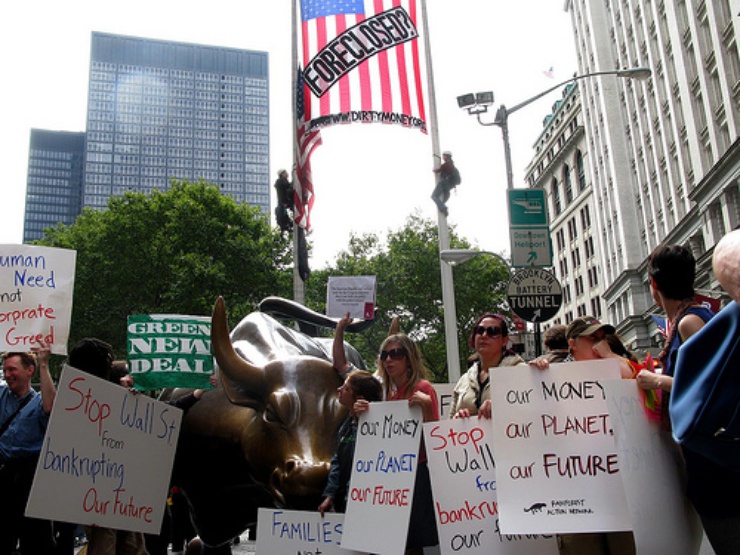
Renewable energy: the next economic bubble?
Published on
When the US-originating ‘dot-com bubble’ of 2001 or the current ‘economic bubble’ in the housing market burst or ‘crashed’, they wreaked havoc on the world economy and its financial markets. What is this ill-understood phenomena?
‘Economic’, ‘market’ or ‘speculative bubbles’ have occurred throughout history with varied causes and impacts. One of the earliest examples in Europe was the Dutch ‘tulip mania’ of 1637, where tulip contracts were signed at 2000% of what they had been three months before. Bubbles typically develop in advanced capitalist economies, with highly sophisticated financial markets where capital is abundant compared to capital-scarce poor countries.
Playing bubble pop
Economists differ over what causes these bubbles. Some argue that it is the ‘herd behaviour’ – a group action without a direction - of investors. Others say that it is down to ‘excess liquidity’ – the loose lending of standards and low rates, or capital, or problems with forecasting market developments. What they do share is the strong diversion of asset prices from the intrinsic value of a good, be they tulip bulbs, houses or internet start-ups. Often it is the adoption of a new technology or a new market ‘fad’ that leads to a rapid surge in the valuation of asset prices, as investors pile into the new product in their search for higher yields.

With the world facing the prospects of a drawn-out recession, looking for new economic bubbles might seem inexpedient. However, it is in times of economic downturns that investors are looking for new investment opportunities where capital could be placed, in the hope of reaping high returns. When trying to identify where a new bubble might be developing, the renewable energy sector seems a good candidate.
Heading towards a renewable energy bubble?
Currently, with oil prices plummeting to historic lows due to the decreased aggregate demand as a consequence of the recession, the world is nonetheless running out of fossil fuels. The drop in oil prices is not because there is increased supply. Actually, oil production might peak in the coming years. Once the economy recovers, energy prices will increase again. Supply will be even more limited if alternative sources are not developed any further.
In the US – the driving economy behind the last economic bubbles – the Obama administration has developed an ambitious plan to develop the renewable energy sector. It has promised to double the share of renewable energies (currently 7%) in its national energy mix over the next three years. It promises to create some 460, 000 new jobs in the energy sector. Under the current stimulus plan, it will invest $25 billion directly in the renewable energy sector. A new energy bill will slate additional funding for the sector. A nationwide emissions trading system will be introduced by 2012.
Will Obama’s ‘green revolution’ be the source of future US economic power?
While it was the internet revolution that propped up the US economy under Bill Clinton and the housing boom that fuelled economic growth under George W. Bush, will Obama’s ‘green revolution’ be the source of future US economic power? Widespread talk about ‘a global race for renewable energy leadership’ and the ‘green collar workers’ of the future already has markets pumping. A recent KPMG report identified a frenzy of mergers and acquisition in the renewables sector throughout 2007. It is likely that new government investments and global competition will further turn up the heat. Will the result be another speculative bubble in the renewables sector? As private investors struggle to find new profitable sectors to invest in a sinking economy while governments subsidise energy investments, it is possible that the foundations of a new bubble are being lay down on our watch, only to burst at the end of the next economic boom.
The risks are real. The damage could be high. A short boom and bust cycle could set back the development of feasible energy alternatives for decades. Setting an appropriate regulatory framework to curtail market exuberance should therefore be a priority for both US and European governments.



